Camera comparison: HTC One vs Nokia Lumia 920 vs Apple iPhone 5 vs Samsung Galaxy S III vs Sony Xperia Z vs Google Nexus 4

You can now read:
- LG G2 vs Samsung Galaxy S4 vs iPhone 5 vs HTC One Camera comparison
- iPhone 5s vs LG G2 vs Samsung Galaxy Note 3 vs Galaxy S4 vs HTC One vs Motorola Moto X vs DROID Ultra Camera comparison
- Google Nexus 5 vs iPhone 5s vs Sony Xperia Z1 vs Samsung Galaxy Note 3 vs Galaxy S4 vs LG G2 vs Nokia Lumia 1020 vs HTC One Camera comparison
Introduction
Smartphone cameras have improved tremendously over the years and nowadays you can easily replace a point and shoot camera with your smartphone, especially if most of the photos you take are during the day and you are not too pretentious about image quality.
One of the biggest leaps in cameraphones recently was the switch to backside-illuminated (BSI) sensors with the light sensitive element being in front of the wiring. A solution that allows for better low light imagery, the technical difficulties for it were overcome in 2011 and 2012, and now most high-end cameraphones have BSI sensors.
In 2013 we are going one step beyond. A lot of mainstream smartphones will be making the jump to 13-megapixel cameras which should translate in greater detail.
HTC has gone against the trend and the HTC One has only a 4.3-megapixel camera. To make up it aims to deliver the best low-light images and videos. And with no intentions to do large prints the 4.3 megapixels should definitely suffice.
Now, we have a star lineup to compare HTC’s latest and greatest with. In this latest smartphone camera shootout we are comparing the HTC One against its biggest rivals: the trend-setting Apple iPhone 5, the most prolific Android device, the Samsung Galaxy S III, and the other smartphone with focus on low-light camera performance, the Nokia Lumia 920. Then, we also have Sony’s 2013 flagship, the Xperia Z with its Exmor RS 13-megapixel camera, and finally, Google’s own Nexus 4.
Additionally, we have reference shots taken with a dedicated camera, the Panasonic Lumix GH2 with its 18-55mm kit lens.
We have used automatic settings in all conditions, except at night when we used night mode (where available) and for macro where we used the macro setting (where available). Images from the reference dedicated camera were downsized to 8 megapixels.
Details
When it comes to the small details in the image, the newcomer HTC One with its modest 4.3-megapixel camera is not standing in a good position. Looking at 100% crops or zooming in closer, you’d definitely see that fine detail is not among the One’s strong features. Images look a bit spongy, even in perfect weather.
The Nokia Lumia 920 yields a high amount of noise, and there is a lot of softening happening on the device. This makes for less distinct images, lacking a bit in sharpness.
The Apple iPhone 5 and Samsung Galaxy S III performed similarly to each other - detail was relatively high, with noise in check. They are our favorites here.
Strangely, smudginess is something that affects the Sony Xperia Z too to some degree. We got varying results with it, in some situations it managed to capture some fine details others could not, but most times this came at the expense of softening the actual image.
On the Nexus 4 noise was noticeable even on a bright sunny day, which is bad, but detail is above average compared to the competition.
Ranking:
- Apple iPhone 5, Samsung Galaxy S III, Nexus 4
- HTC One
- Nokia Lumia 920, Sony Xperia Z
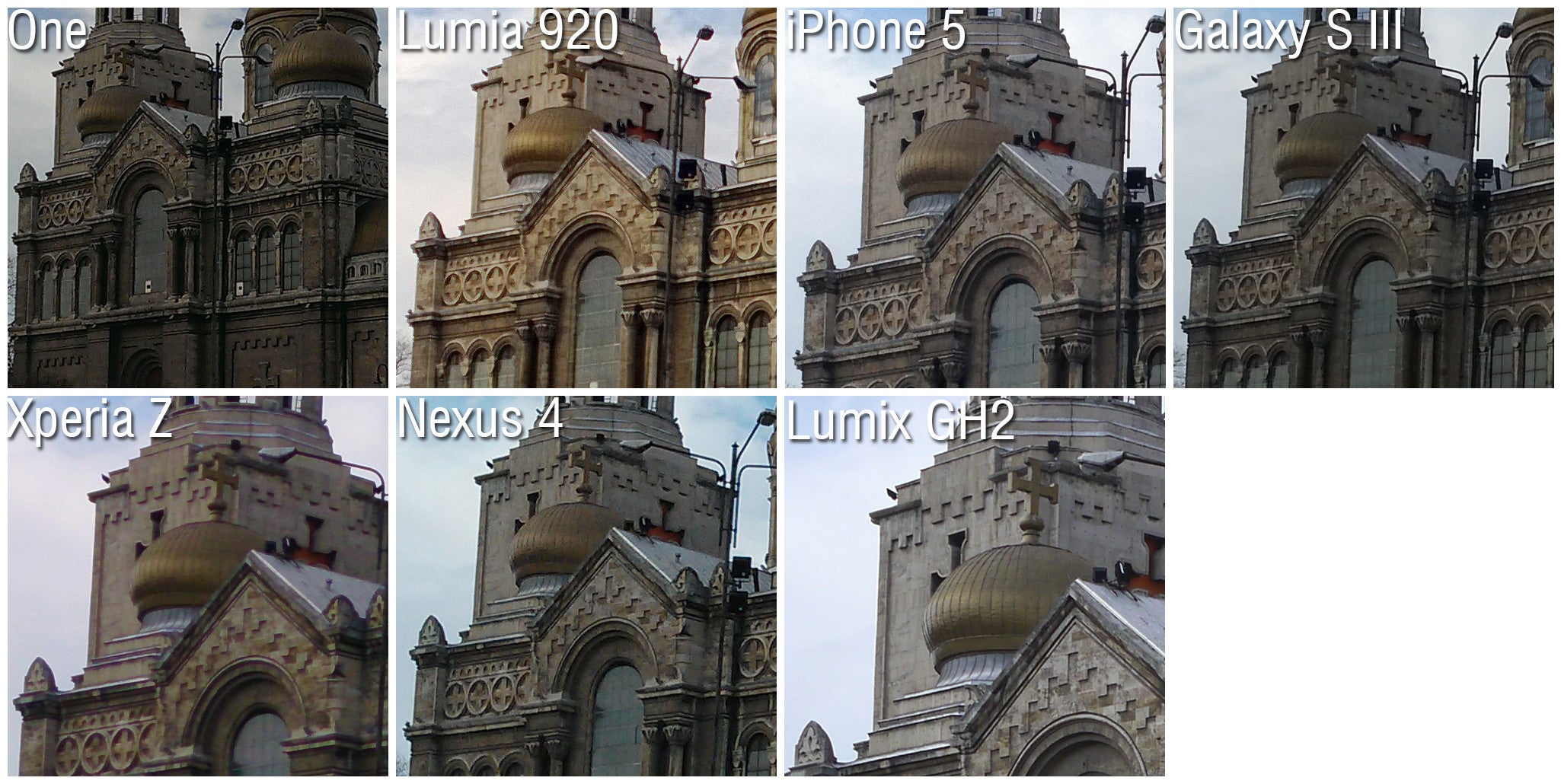
100% Crops
Color reproduction
Colors on the HTC One came out realistic, actually in many cases approaching closely the ones we got on our reference camera. In some shots, they came out slightly yellowish, compared to the dedicated camera, but as a whole the One offers satisfying balance.
The Nokia Lumia 920 on the other hand oversaturated everything blowing it way out of proportion, colors look plain unreal. While this may be good for some shots, it is bad in others and is inaccurate in all.
The iPhone 5 and Galaxy S III go traditionally hand in hand with fairly accurate color representation, tending to slightly pump up tones.
The Sony Xperia Z is also oversaturated compared to the real world, but to a lesser extent when compared to the Lumia 920. Additionally a slight purplish tint to its images is ever present.
Nexus 4 has similar results to the HTC One, but its images are slightly more oversaturated.
Ranking:
- Apple iPhone 5, Samsung Galaxy S III, HTC One
- Nexus 4, Sony Xperia Z
- Nokia Lumia 920
Indoor
Indoor studio shots performed under identical conditions are a perfect opportunity to see how different smartphones behave in typical low-light situations, such as in the office or at home.
The HTC One produces artificial, washed out colors in these imperfect conditions. Fine detail is again not excellent, but noise levels are very good and images look sharp.
The Nokia Lumia 920 performs very differently under low-light conditions than in daylight and in this case it surprisingly picked a more realistic tonality than we saw in the outdoor shots. Fine detail and noise level are well balanced.
The Apple iPhone 5 produces pretty accurate, pleasant tones. Noise becomes an issue but the same is true to an even larger extent for other devices. We don't like that its flash doesn't help for auto focus in dark scenes, so some photos may be out of focus.
The Samsung Galaxy S III colors are “typically indoor” and inaccurately warm; detail is average and if the LED flash works, it may result in a blueish shot.
The Sony Xperia Z studio images came out with relatively accurate colors and although detail is not the best, the handset overall did a decent job.
The Nexus 4 images shifted the color balance towards the yellow while detail level is decent. The flash may cast a blue halo though.
Ranking:
- Apple iPhone 5, Nokia Lumia 920, HTC One
- Samsung Galaxy S III, Nexus 4, Sony Xperia Z
Night
For the night photos, HTC One performes well - the noise levels are controlled, but detail is not great due to its low resolution of only 4-megapixels. Exposure is accurate, but colors are once again slightly yellowish.
At night, images on the Nokia Lumia 920 differ drastically from what you’d see during daytime. Colors go to the other end of the spectrum and look washed out and dull. The handset tends to pick very slow shutter speeds which makes a lot of images blurry.
The Apple iPhone 5 does a decent job at night. Colors again look close very realistic, with a nice slight warm tonality. The iPhone 5 has the secret advantage of supporting ISO as high as 3200 while most other phones max out at 1600. Apple is not afraid to use that and while noise definitely becomes a big issue, in exchange you almost always get a picture where you can actually see something while other phones would only capture black.
The Samsung Galaxy S III doesn’t do so well in in low-light. Its images are overexposed to the point that even darker areas look well lit. This also results in a noisier image that is lacking fine detail.
The Sony Xperia Z shot pretty good images – slightly underexposed leaving not well-lit areas dark, but with great detail in the well-lit areas. Colors tend to be on the warmer side here.
Nexus 4 does relatively good exposure, with average detail and noise.
Ranking:
- Apple iPhone 5
- HTC One, Sony Xperia Z
- Lumia 920, Nexus 4
- Samsung Galaxy S III
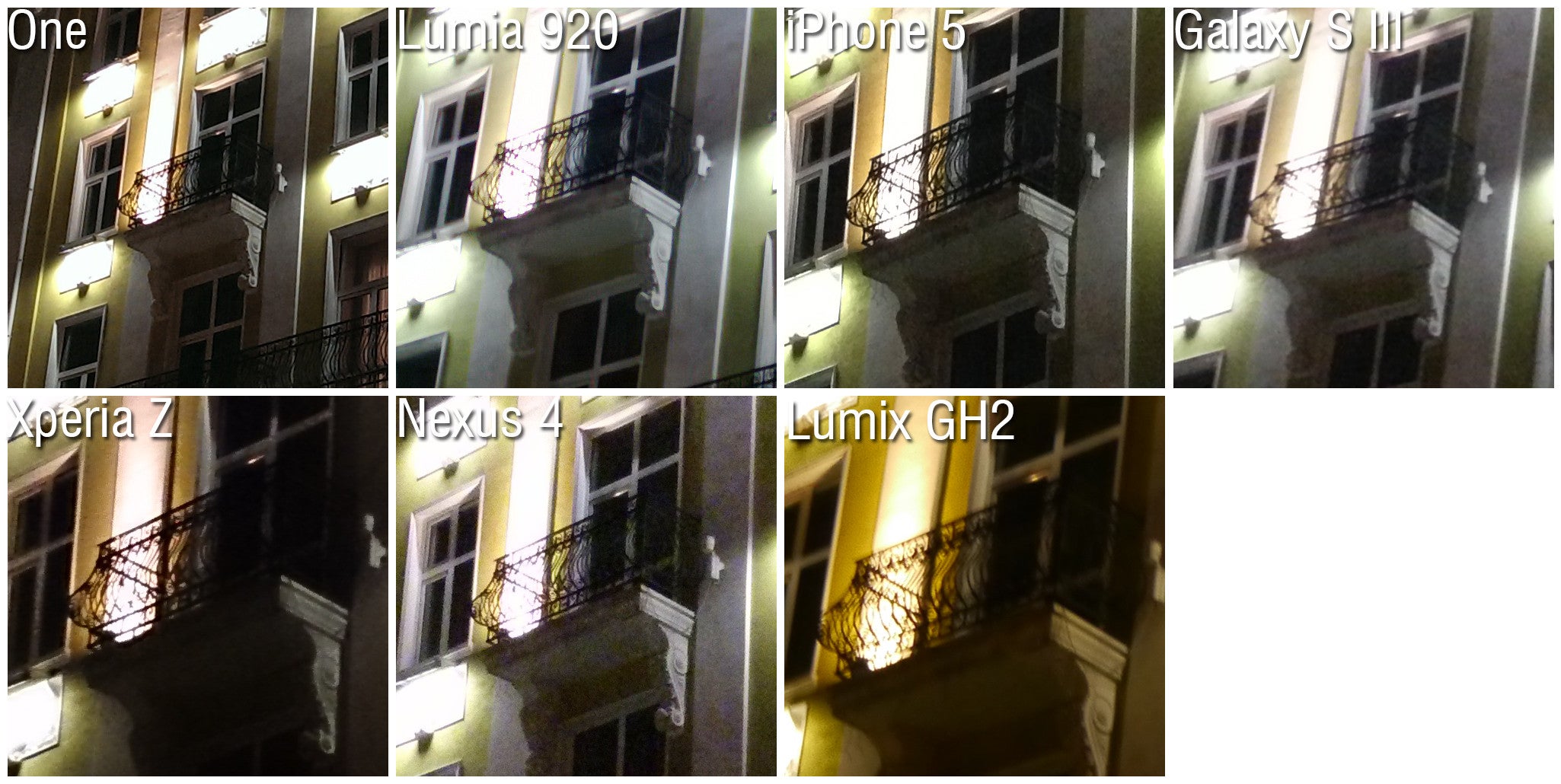
100% Crops
Macro
Macro shots on the HTC One vary depending on the conditions. The handset tends to pick up side light and overexpose images sometimes, but when light didn’t interfere macro shots looked stunningly sharp.
The Apple iPhone 5 and Samsung Galaxy S III were on par here, producing great looking macro shots, with plenty of detail and a noticeable slight bokeh effect.
Softening on the Lumia 920 and Xperia Z was more apparent in macro shots, and played out to their disadvantage here. The Nexus 4 ranked last with softer, least impressive macro shots of them all.
Ranking:
- Apple iPhone 5, HTC One, Samsung Galaxy S III
- Nokia Lumia 920, Sony Xperia Z
- Nexus 4
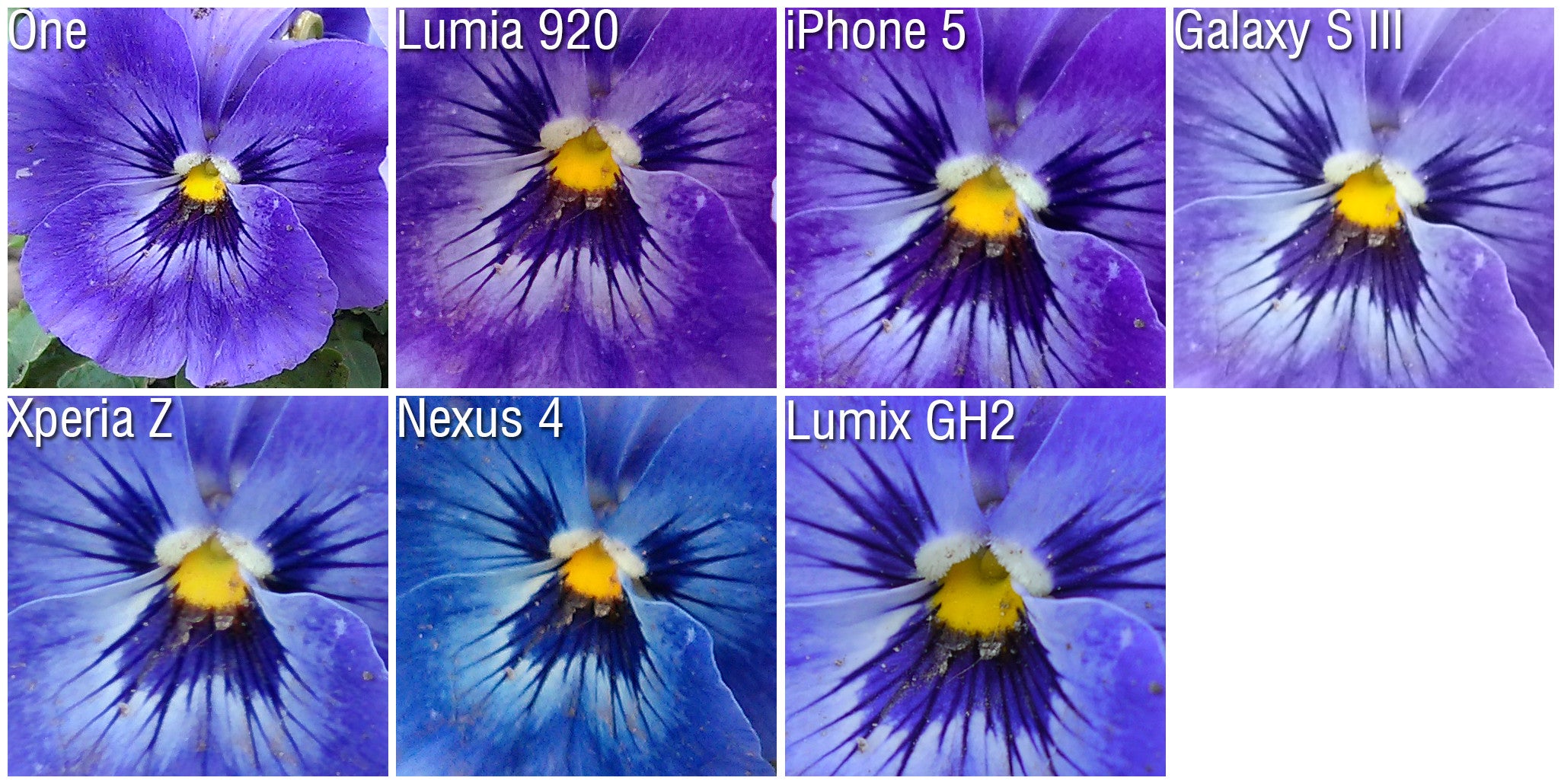
100% Crops
Video
Daytime:
Videos shot during the day benefit from plentiful light. Sunny weather or even overcast skies, those are good conditions for a small sensor such as the one on a smartphone. All of our smartphones performed well in those conditions, with no skipped frames and a solid 1080p video output. But some stood out.
One feature we appreciated a lot in the HTC One and Nokia Lumia 920 was the optical image stabilization (OIS). This is such a game-changer, and makes a world of a difference in the captured video. While video on handsets like the Galaxy S III turns out very shaky, the One and the Lumia 920 do an admirable job of fixing that. The Lumia 920 has a slight edge, but OIS worked very well on the One as well. In terms of color purity, we liked the video on the Apple iPhone 5 the most.
Night:
If you are the kind of person that enjoys parties, goes out to bars, clubs or concerts a lot, good news is that with the HTC One comes with very good night video recording quality for a smartphone and you ought to love that. You can see that it is the only device that records usable footage from a dance party we visited - while you’d struggle to see people’s faces in the dark on other phones, you’d easily see them on footage from the HTC One.
It is also better with our night scenes shooting beautiful buildings in the city – colors and exposure are great and so is notice level.
Nokia Lumia 920 performs very well here although white balance may be an issue sometimes – you can see how the church color in the clip got washed out.
The Apple iPhone 5 seems to do fairly well in these conditions too, and while noise is definitely an issue, the end result is decent for a smartphone.
Galaxy S III once again delivers overexposed results – the videos are usable, but not as pretty.
Xperia Z's night videos are also very good, with naturally looking colors and exposure.
The Nexus 4 is the worst of them all. Its night videos are ruined by bad noise, problems with the focus and not so good colors.
Ranking:
- HTC One
- Nokia Lumia 920
- Apple iPhone 5, Sony Xperia Z
- Samsung Galaxy S III
- Nexus 4
Sound in video:
Good video is not just about what you see, though, it is also a lot about the audio. Best results are achieved with the HTC One, which delivers full, deep stereo sound. Nokia Lumia 920 also records distortion free and bass-full sound, but its sound is also kinda muffled and it is a bit quieter for some reason.
The rest of the devices just lack that depth and clarity. If we had to give out a bronze medal, the Apple iPhone 5 would get it but it’s a very distant third that lacks depth. The Sony Xperia Z and Samsung Galaxy S III rank about the same down the list with Xperia Z having a slightly hissy recordings and the S III sounding downright tinny. The Nexus 4 once again is the sore loser, recording sub-par sound.
Ranking:
- HTC One
- Nokia Lumia 920
- Apple iPhone 5, Sony Xperia Z, Samsung Galaxy S III, Nexus 4
Camera interface comparison
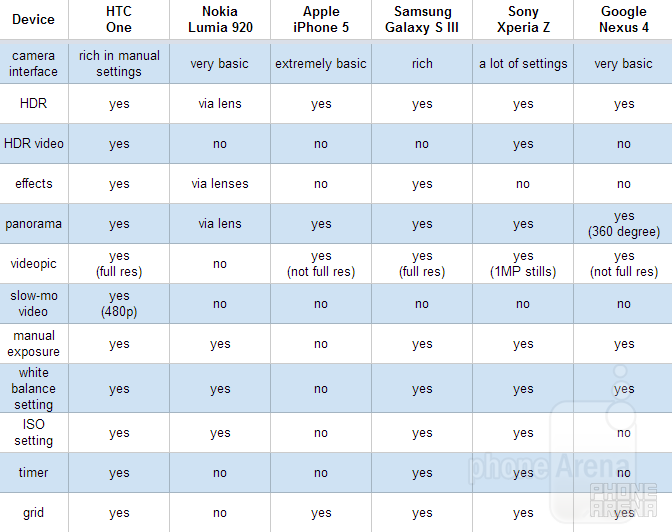
We have six of the best smartphones out there and what’s notable about this selection is that none of them have the same camera interface! You get all the variety you want - from full-on automatic with virtually no manual settings (hello, iPhone 5) to a wide variety of tweaks and manual settings (Samsung Galaxy S III and HTC One).
Firing up the camera is lightning quick on all phones, with the difference being negligible, in the fractions of a second with only the Sony Xperia Z taking slightly longer to go from a locked to camera. The auto-focus works equally quickly on all except the Nokia Lumia 920 which is set up differently so that it does not auto-focus and instead relies on the user to focus using the shutter key. In low-lit conditions auto-focus does take a bit longer, but that delay is consistent across the devices. All of them support face recognition but on the Samsung Galaxy S III you have to manually turn it on. Of them all, only the Sony Xperia Z has a smile shutter option.
When it comes to the interfaces, the HTC One has a very rich in options and fairly intuitive interface where you can adjust all sorts of settings.
The Nokia Lumia 920 with Windows Phone 8 has a very basic interface. It uses a weird 'lens' system where you download 'lenses' from the Marketplace to add different effects or modes to your shooting (cinemagraph, panorama, and so on).
The Apple iPhone 5 on the other hand has only an automatic option with the only option being a choice of whether to shoot in HDR or not. The Samsung Galaxy S III is similar to the One in that it has all sorts of settings to choose from.
The Sony Xperia Z also deserved a special mention with its totally unpredictable “superior auto mode.” It can capture an HDR image without warning you in any way. This is a double-edged sword - total beginners might appreciate it, but you should stay away from it if you want to be the one who is in control. There is a more predictable, simple ‘auto’ mode which we recommend for most situations.
Finally, the Nexus 4 has the new ring camera interface that might seem cool at first, but is fairly plain. There are almost no manual settings, and if you are not completely used to it, your finger often gets in the way making it not very easy to use.
Conclusion
It’s hard to name a winner, right now in cameraphones we are speaking about compromises, so we’ll just list the ones you have to make with the HTC One, the Nokia Lumia 920, the Apple iPhone 5, Samsung Galaxy S III, Sony Xperia Z and the Nexus 4.
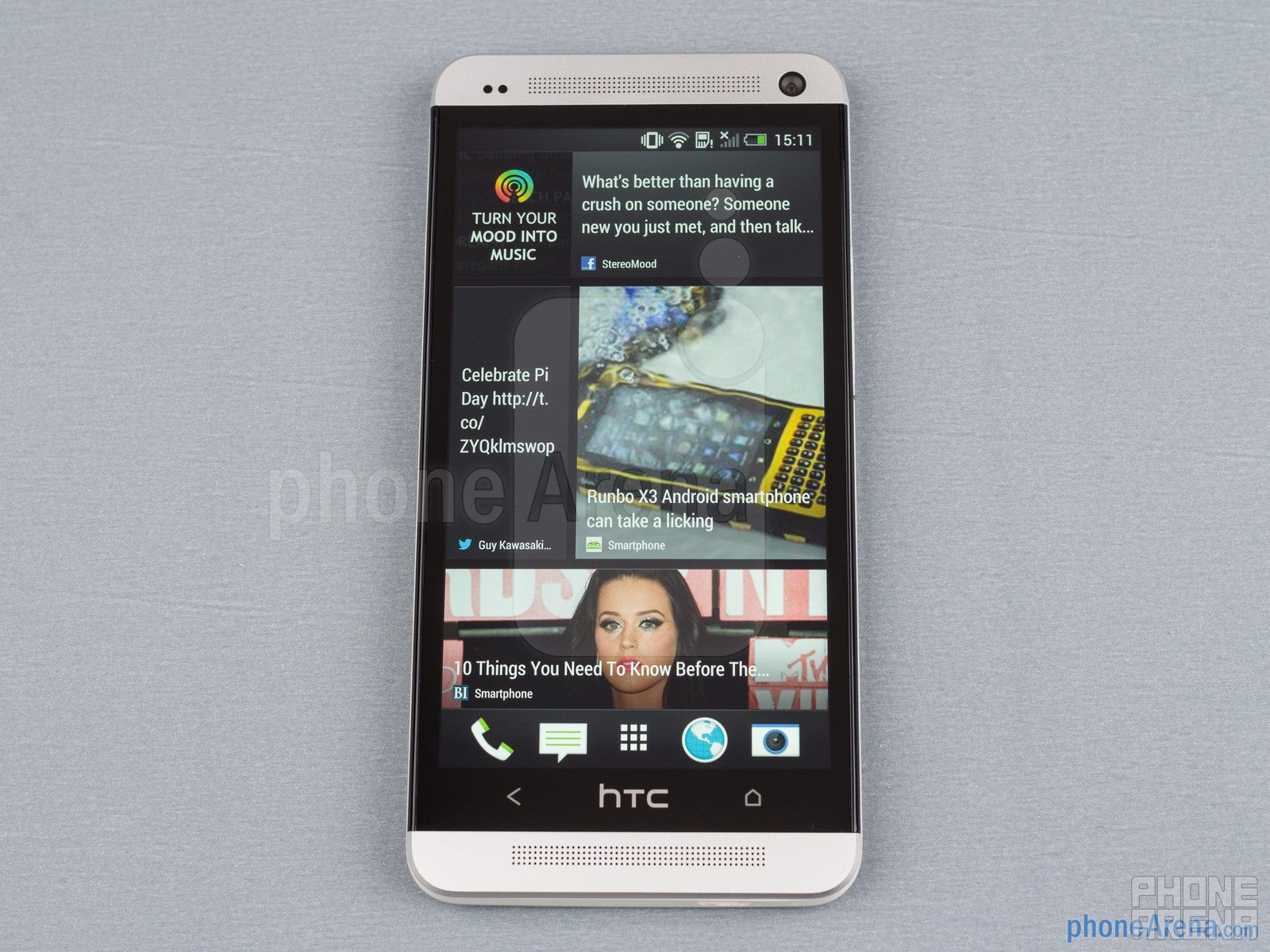
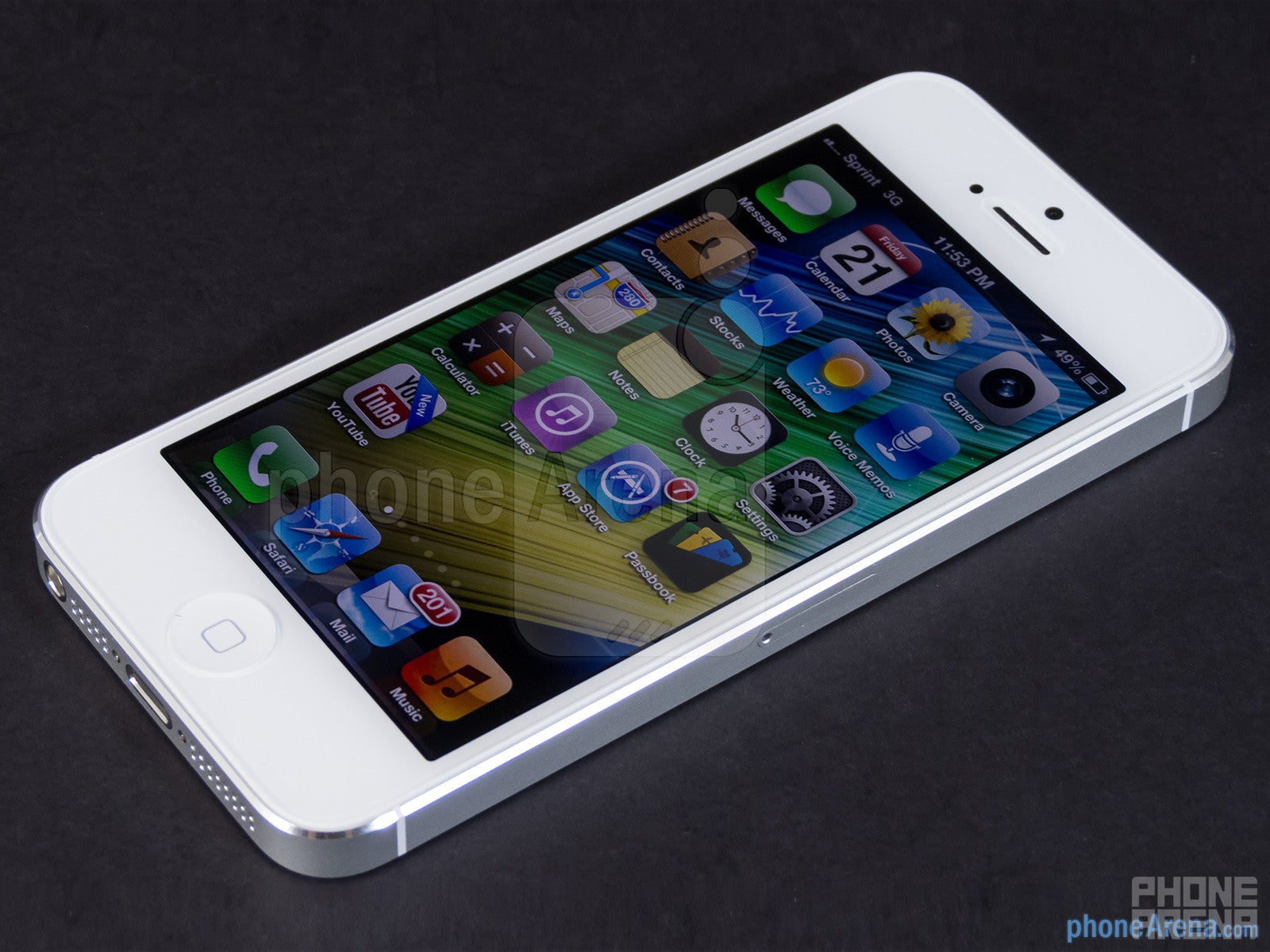
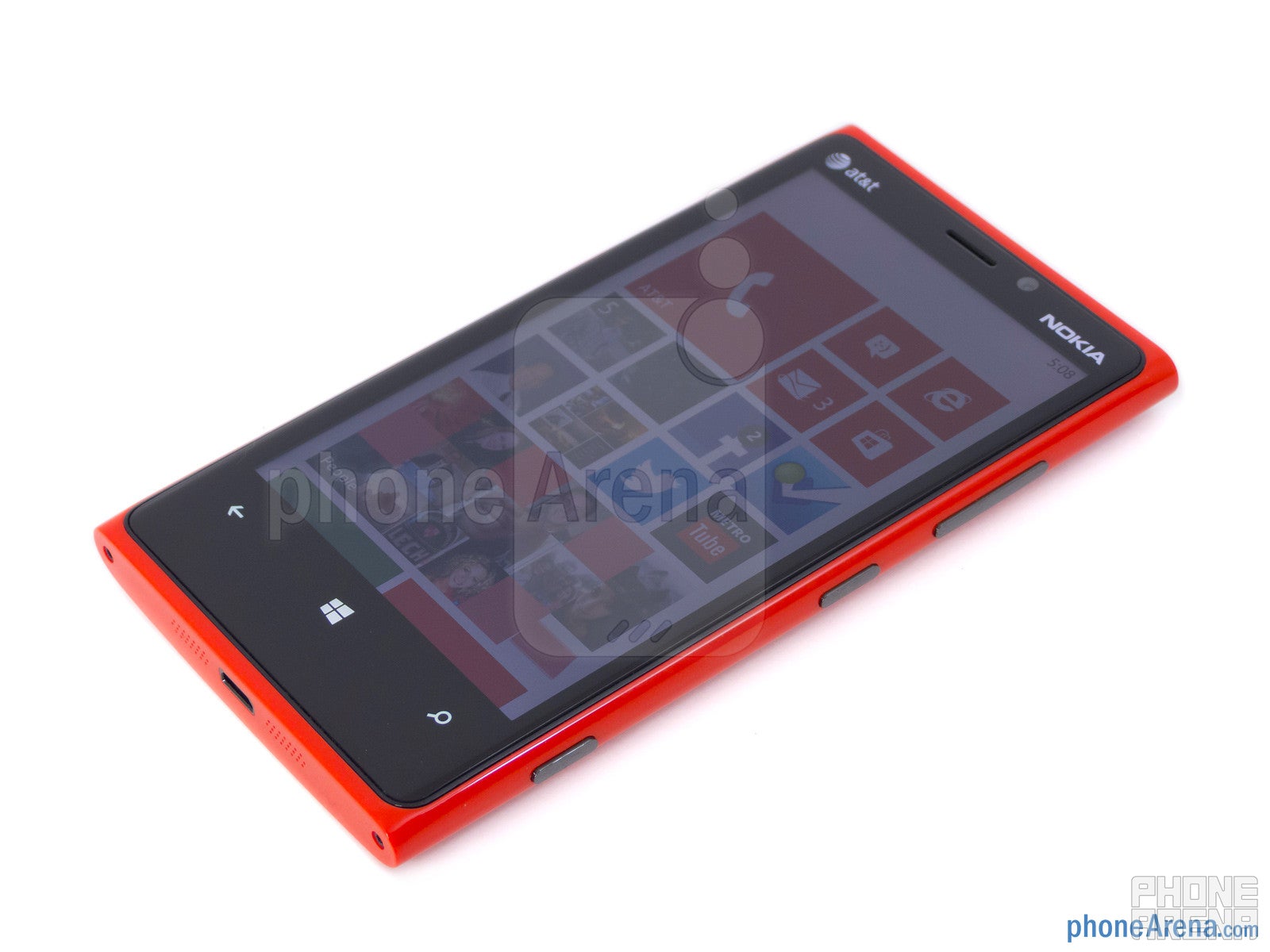
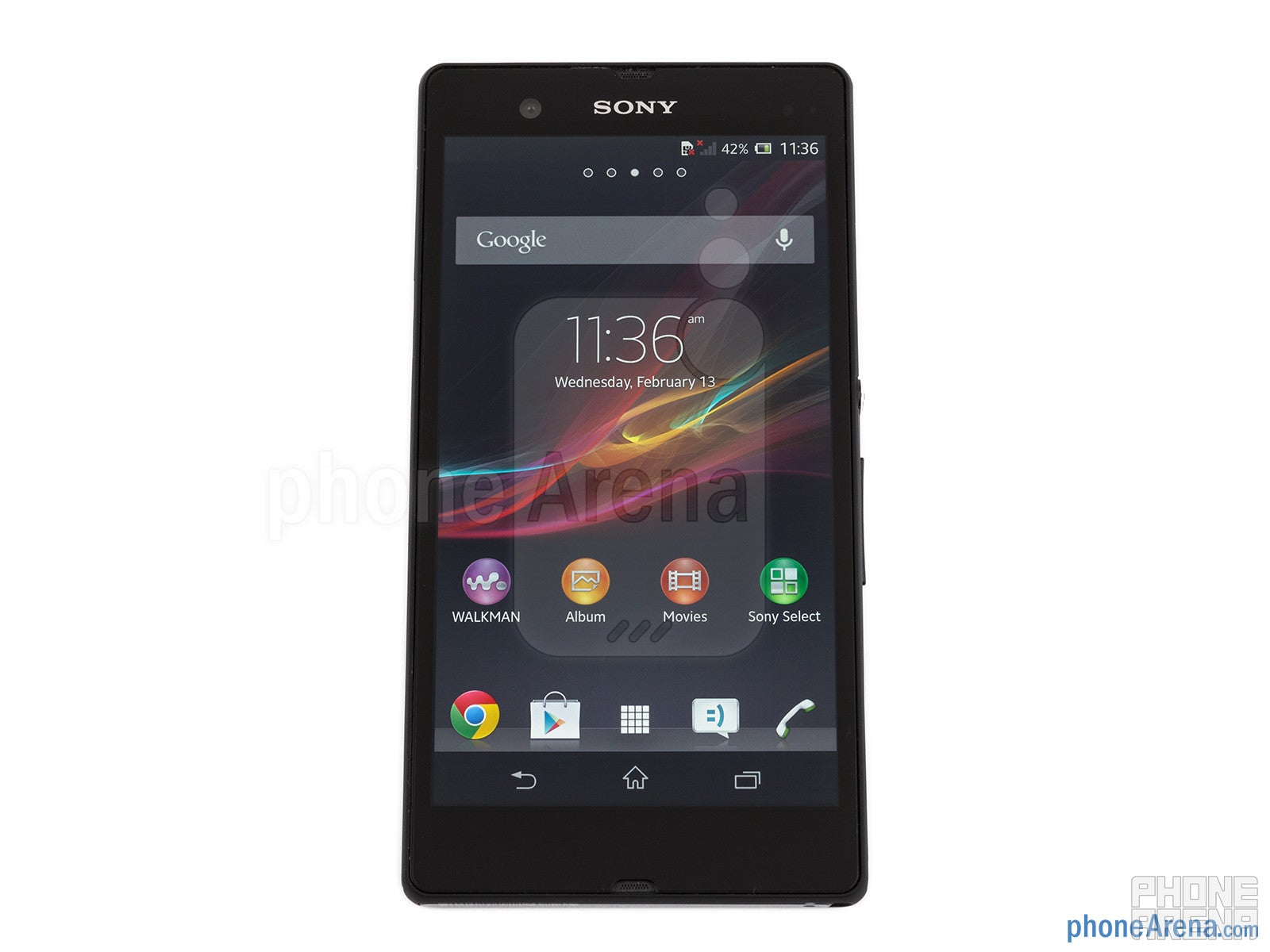
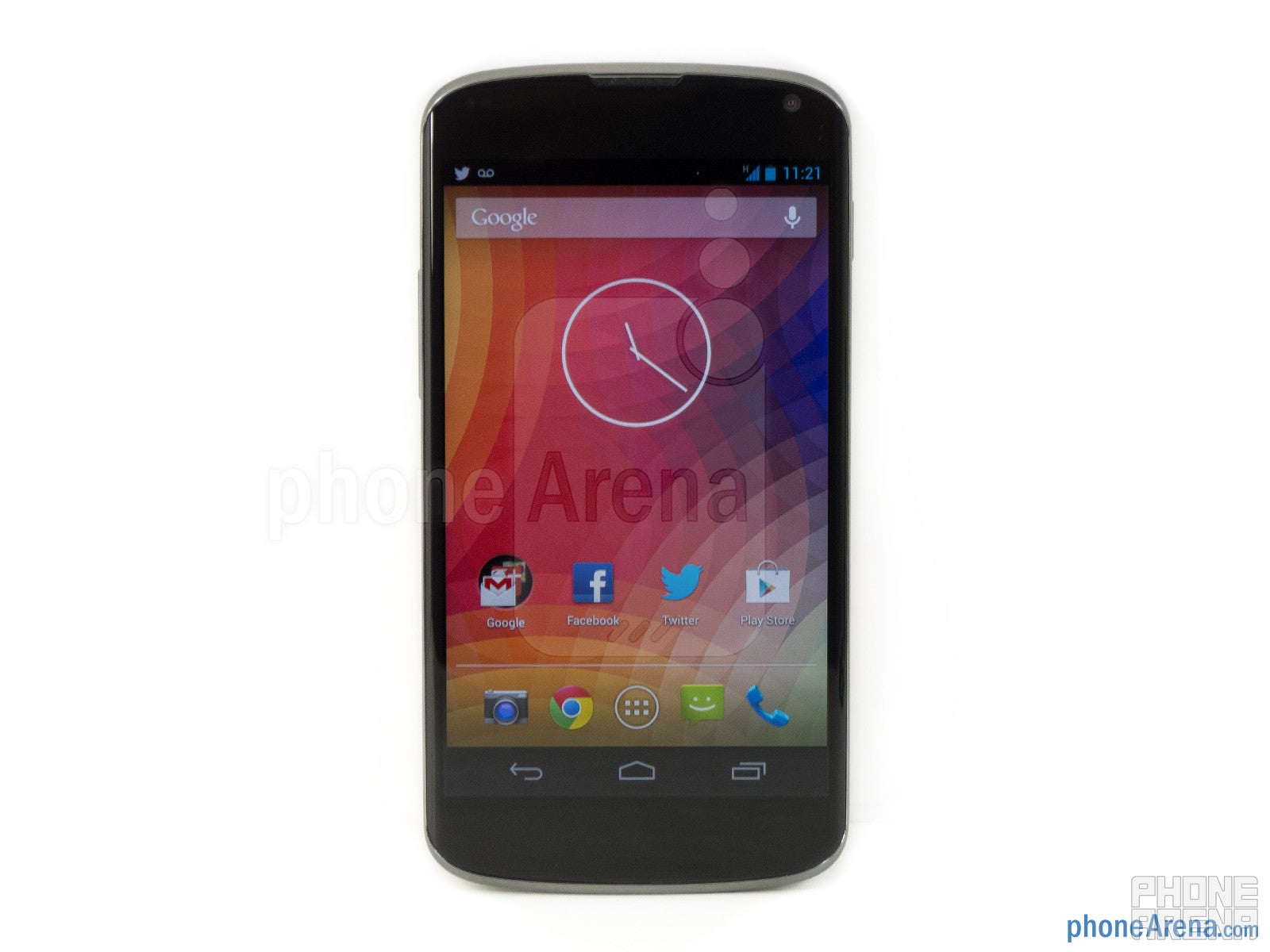
You can now read:
- LG G2 vs Samsung Galaxy S4 vs iPhone 5 vs HTC One Camera comparison
- iPhone 5s vs LG G2 vs Samsung Galaxy Note 3 vs Galaxy S4 vs HTC One vs Motorola Moto X vs DROID Ultra Camera comparison
- Google Nexus 5 vs iPhone 5s vs Sony Xperia Z1 vs Samsung Galaxy Note 3 vs Galaxy S4 vs LG G2 vs Nokia Lumia 1020 vs HTC One Camera comparison


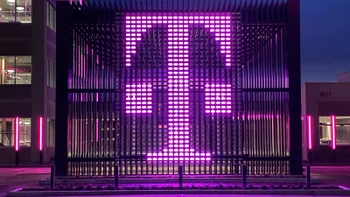
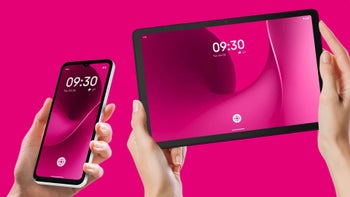
![T-Mobile representative paints a super grim future for customers, reveals how you’re being lied to in stores [UPDATED]](https://m-cdn.phonearena.com/images/article/173253-wide-two_350/T-Mobile-representative-paints-a-super-grim-future-for-customers-reveals-how-youre-being-lied-to-in-stores-UPDATED.webp)
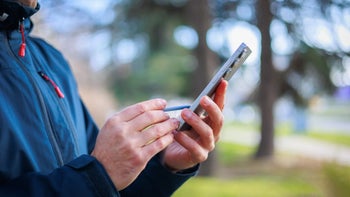
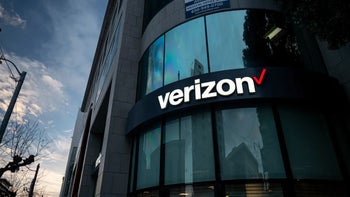
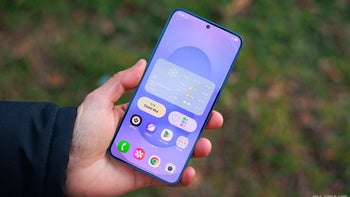

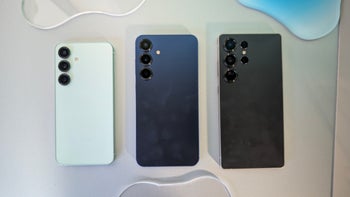
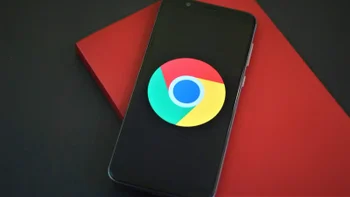
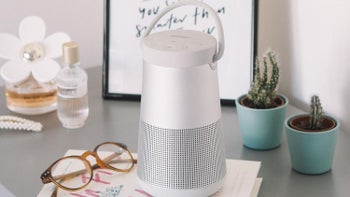


Things that are NOT allowed:
To help keep our community safe and free from spam, we apply temporary limits to newly created accounts: